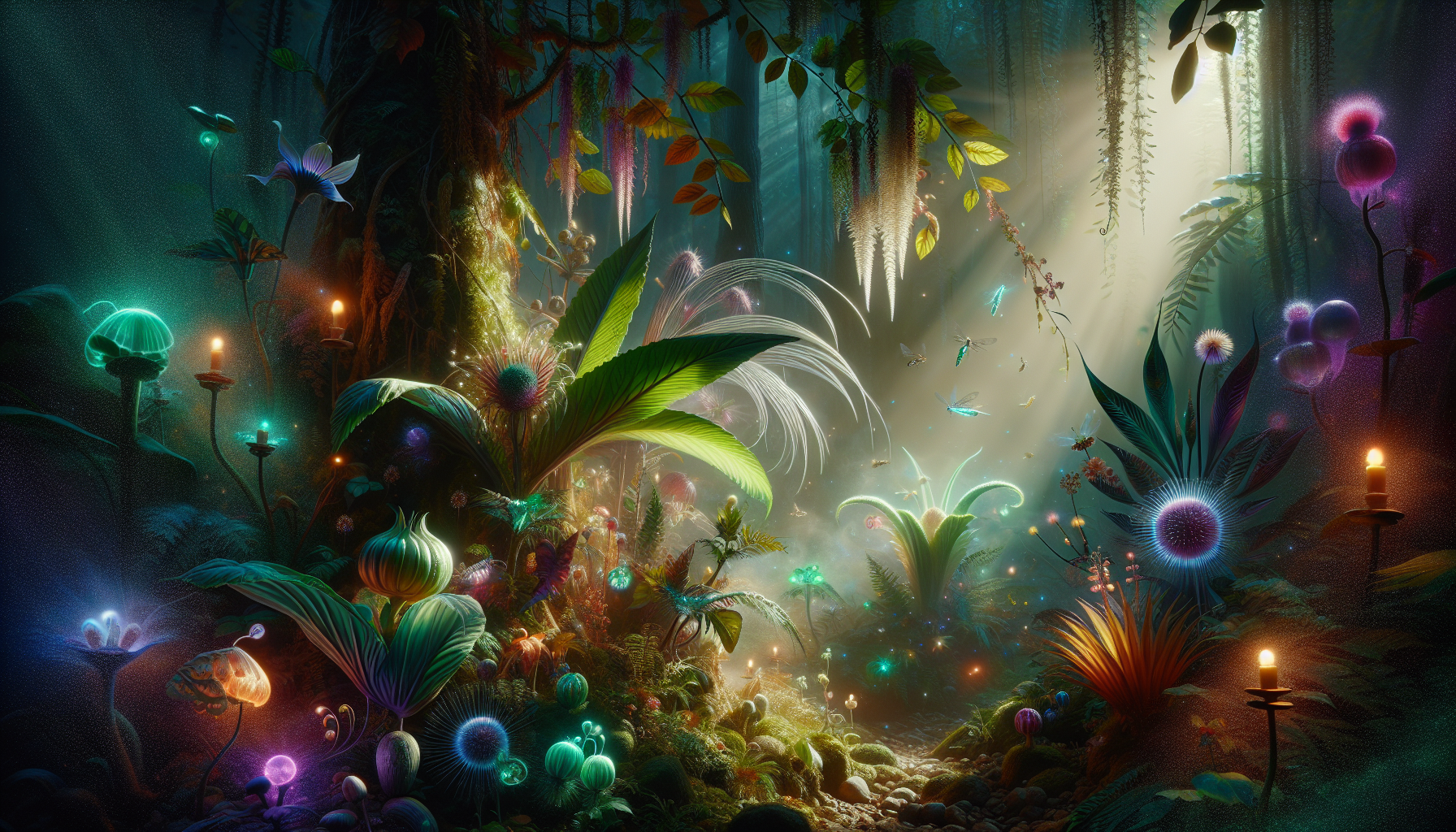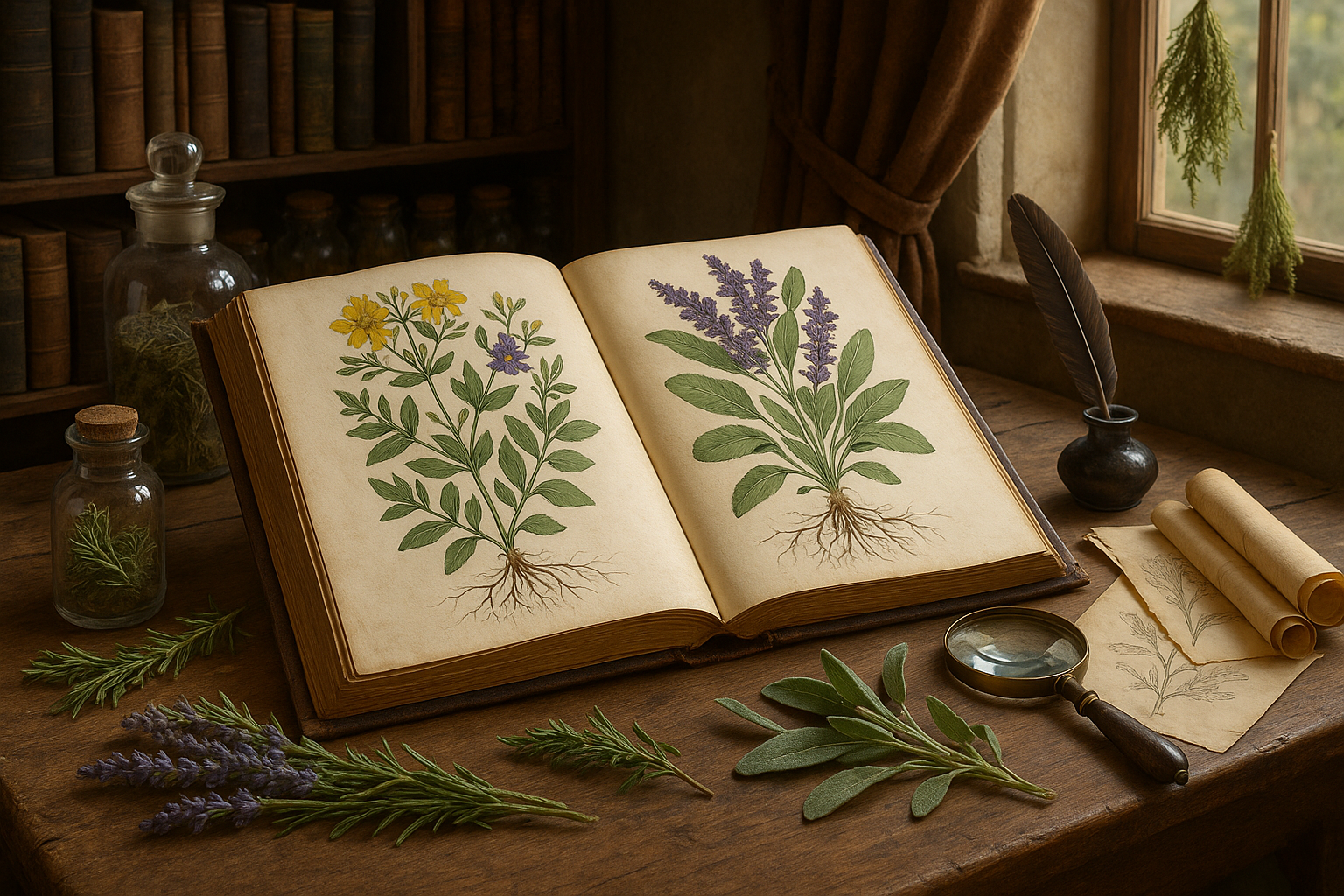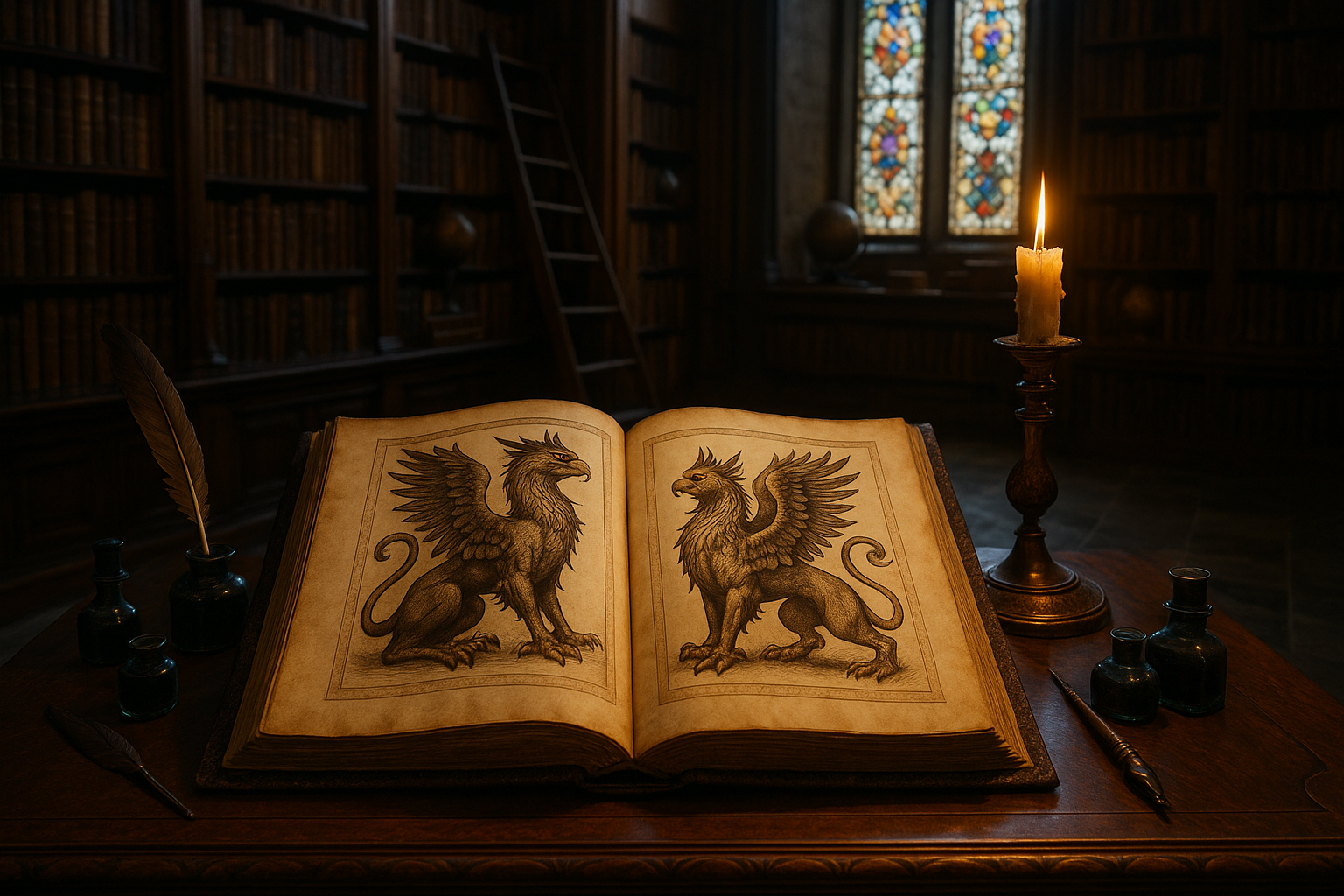In a world where technology dominates our daily lives, there remains a timeless fascination with the natural world, particularly with the enigmatic and mystical realm of plants. 🌿 These silent, green companions have been the object of human intrigue for centuries, not only for their physical beauty and ecological significance but also for the mysterious powers they are believed to possess. From ancient alchemists to modern herbalists, the allure of magical and alchemical plants has captivated the human imagination, weaving a tapestry of legend, science, and art. This exploration into the enchanting flora offers us a glimpse into a world where nature and the supernatural intertwine, creating a narrative that is as beautiful as it is mysterious.
The journey begins by delving into the history of these mystical plants, tracing their roots back to ancient civilizations where they were revered not only for their medicinal properties but also for their spiritual significance. In cultures around the world, plants were not merely passive elements of the landscape but active participants in the drama of life and death, healing and transformation. The ancient Egyptians, for example, held the lotus in high esteem, associating it with creation and rebirth, while the Druids of the Celtic tradition saw the oak as a sacred bridge between the earthly and the divine. By examining these cultural narratives, we gain insight into how plants have shaped human beliefs and practices throughout history.
As we move deeper into the world of magical flora, we encounter the fascinating field of alchemy, where plants played a central role in the quest for transformation and enlightenment. Alchemy, often misunderstood as a mere precursor to modern chemistry, was a complex philosophical and spiritual system that sought to understand the underlying principles of the universe. At the heart of this quest were plants, which were believed to contain the secrets of life itself. From the elusive philosopher’s stone to the fabled elixir of life, plants were seen as key ingredients in the alchemist’s arsenal, offering pathways to both physical and spiritual transformation. Through detailed botanical drawings and records, we uncover the alchemical significance of plants and how they contributed to this ancient science.
The allure of these plants is not only rooted in history and science but also in the exquisite artistry that has depicted them over the centuries. Botanical illustrations, often created by skilled artists and scientists, serve as both scientific documentation and works of art, capturing the intricate beauty of plants in a way that words alone cannot convey. These drawings are windows into the past, revealing how people of different eras understood and valued the natural world. Through the careful study of these illustrations, we can appreciate the symbiotic relationship between art and science, where each discipline enriches the other, and where plants are celebrated not only for their utility but also for their aesthetic and symbolic power.
Finally, we arrive at the modern-day resurgence of interest in magical and alchemical plants, driven by a growing desire to reconnect with nature and explore the holistic benefits of plant-based healing. In a time when many seek alternatives to synthetic pharmaceuticals, the age-old wisdom of herbalism is experiencing a renaissance. Contemporary practitioners and enthusiasts are rediscovering the potential of plants to heal not just the body, but the mind and spirit as well. By embracing both ancient traditions and modern innovations, we can unlock the full potential of these enchanting flora, enriching our lives in ways that are both profound and transformative. 🌸
Join us as we embark on this enchanting journey through the mystical world of magical and alchemical plants. From historical narratives and alchemical secrets to breathtaking botanical art and contemporary practices, this exploration invites you to reconnect with the wonder and wisdom of the natural world. As we unveil the mysteries of these plants, we hope to inspire a deeper appreciation for the magic that lies hidden in the heart of nature, waiting to be discovered by those willing to look beyond the surface.
The Historical Significance of Magical and Alchemical Plants
The enchanting flora of magical and alchemical plants has a rich historical significance, deeply intertwined with ancient traditions, mysticism, and early scientific explorations. These plants have been revered across various cultures and periods, often being seen as divine gifts capable of healing, protection, and transformation. For centuries, plants such as mandrake, belladonna, and henbane have been central to the practices of shamans, herbalists, and alchemists, serving as conduits between the physical and spiritual realms. The historical context of these plants is vast, with each culture adding layers of myth, legend, and practical applications to their uses.
In ancient Egypt, for example, the use of plants in magic and alchemy was well-documented. The Egyptians utilized a variety of plants for both their practical medicinal properties and their mystical qualities. Papyrus Ebers, one of the oldest medical texts, provides insight into the use of plants like opium poppy and cannabis in religious rituals and medicinal treatments. The belief in the supernatural powers of plants was so pervasive that they were often incorporated into the burial practices to protect and guide the deceased in the afterlife.
Similarly, in medieval Europe, the study of alchemical plants became a blend of science and spirituality. Alchemists believed that plants held the secrets to eternal life and the philosopher’s stone, a mythical substance capable of turning base metals into gold and granting immortality. The intricate drawings and writings of these plants by alchemists reveal a deep understanding of their potential and an unwavering belief in their transformative powers. These historical practices laid the groundwork for modern pharmacology and herbal medicine, highlighting the enduring legacy of these mystical plants.
The Mystical Properties and Uses of Specific Plants
Understanding the mystical properties and uses of specific plants requires a journey into the realms of botany, folklore, and cultural anthropology. Each plant holds a unique place in the pantheon of magical and alchemical flora, with distinct attributes and applications. The mandrake, for instance, is perhaps one of the most legendary magical plants. With roots resembling the human form, it was believed to scream when uprooted, causing death to those who heard it. Alchemists and herbalists coveted the mandrake for its purported ability to enhance fertility, attract love, and provide protection.
Belladonna, also known as deadly nightshade, is another plant steeped in mystical lore. While highly toxic, it was historically used in small doses to create tinctures believed to induce visions and communicate with the divine. In the context of alchemy, belladonna was thought to possess the ability to transcend the physical and unlock hidden truths. Its role in medieval witchcraft is well-documented, as it was often used in flying ointments to facilitate the witches’ journey to sabbats.
Henbane, a plant with a storied past, was utilized by ancient Greeks and Romans in various ceremonial practices. Known for its hallucinogenic properties, henbane was often used to induce trances and communicate with spirits. In alchemical traditions, it was seen as a key ingredient in the search for hidden knowledge, believed to open the mind to the mysteries of the universe. The mystical properties of these plants are not merely historical artifacts; they continue to inspire modern interpretations and applications in various spiritual and therapeutic practices.
Artistic Representations: Drawings and Symbolism
Artistic representations of magical and alchemical plants offer a visual gateway into their mystical world. Drawings, often found in ancient manuscripts, serve as both scientific documentation and symbolic exploration. These illustrations were not merely botanical records; they were imbued with symbolic meanings that reflected the cultural and spiritual beliefs of the time. The intricate details and artistic styles of these drawings provide insight into how different cultures perceived and interacted with these plants.
In medieval herbals, artists often depicted plants with anthropomorphic features, highlighting their perceived sentience and supernatural attributes. These drawings were used by alchemists and herbalists as guides for identifying and utilizing the plants. The symbolism in these artworks extended beyond their physical characteristics, often incorporating elements of mythology and spirituality to convey deeper meanings. For example, the depiction of a mandrake with a human-like form emphasized its connection to human vitality and magical potency.
Moreover, these artistic representations served as educational tools, passing down knowledge through generations. The symbolism embedded in the drawings acted as a visual language, conveying complex ideas about the plants’ uses and significance. Today, these historical artworks continue to captivate modern audiences, inspiring contemporary artists to explore the mystical themes associated with magical and alchemical plants. This ongoing artistic dialogue highlights the enduring allure of these plants and their ability to transcend time and culture.
| Plant | Mystical Properties | Historical Uses |
|---|---|---|
| Mandrake | Fertility, Protection, Love | Used in rituals to enhance fertility and provide protection |
| Belladonna | Visionary, Divination | Induced visions and communication with the divine |
| Henbane | Trance Induction, Spiritual Communication | Used in ceremonies to communicate with spirits and gain knowledge |
Modern Interpretations and Applications
The fascination with magical and alchemical plants has not waned in modern times. Instead, contemporary interpretations and applications have evolved, blending ancient wisdom with modern science and spirituality. Herbal medicine and holistic healing practices continue to explore the therapeutic potentials of these plants, often incorporating them into treatments aimed at healing both body and mind. The resurgence of interest in natural remedies and alternative therapies has rekindled the exploration of these mystical plants.
Furthermore, the spiritual and symbolic aspects of these plants have found their way into modern spiritual practices. Many individuals incorporate the use of magical plants into rituals, meditation, and personal development activities. The symbolic meanings attached to these plants provide a rich tapestry for introspection and self-discovery. Modern practitioners often seek to connect with the energies and archetypal symbols associated with plants like mandrake and belladonna, integrating them into personal and collective spiritual journeys.
In the realm of art and culture, magical and alchemical plants continue to inspire creativity and exploration. Artists and writers draw upon the rich symbolism and mystical narratives associated with these plants, creating works that bridge the gap between the ancient and the contemporary. The visual and literary arts provide a platform for reimagining the stories and significance of these plants, ensuring their continued relevance and fascination in today’s world.
To delve deeper into the captivating world of magical and alchemical plants, consider watching this insightful video: “The Mystical World of Alchemical Plants” by Nature’s Mysteries. 🎥✨
Future Directions in Research and Exploration
The study of magical and alchemical plants is an ever-evolving field, with numerous opportunities for future research and exploration. Advances in scientific methods, coupled with a growing interest in traditional knowledge systems, have opened new avenues for understanding the properties and potential applications of these plants. Researchers are increasingly examining the pharmacological aspects of these plants, seeking to uncover their chemical compositions and therapeutic potentials.
Additionally, the cultural and historical dimensions of magical plants continue to be a rich area for scholarly inquiry. Ethnobotanists and cultural anthropologists explore the traditional uses and symbolic meanings of these plants across different cultures, seeking to preserve and document indigenous knowledge. This research not only contributes to our understanding of the past but also informs contemporary practices and innovations in various fields.
The intersection of art, science, and spirituality in the study of magical and alchemical plants presents a unique opportunity for interdisciplinary collaboration. By integrating diverse perspectives and methodologies, researchers and practitioners can deepen their understanding of these plants and their significance. As interest in holistic and integrative approaches to health and well-being grows, the exploration of magical and alchemical plants is poised to make significant contributions to both personal and collective transformation.
- Mandrake: Known for its human-like root and associations with fertility and protection.
- Belladonna: Historically used for visions and divination, despite its toxic nature.
- Henbane: Employed in ancient ceremonies for its hallucinogenic properties and spiritual significance.

Conclusion
In concluding our exploration of “Enchanting Flora: Unveiling the Mystical World of Magical and Alchemical Plants Through Drawings,” we have delved into a fascinating tapestry woven with botanical wonders and their significant roles throughout history. This article has journeyed through the vivid illustrations and historical contexts of plants renowned for their mystical and alchemical properties, shedding light on their enduring allure and multifaceted significance.
Throughout our discussion, we embarked on a voyage through time, examining how ancient cultures, from the Egyptians to the Celts, revered certain plants not only for their practical uses but also for their magical and spiritual significance. We explored how these plants were intricately linked to rituals, healing practices, and the esoteric knowledge of the ancients. From the mandrake’s mysterious roots, often anthropomorphized in folklore, to the sacred lotus’s spiritual symbolism, the diversity and depth of these botanical treasures were brought to life through exquisite drawings and detailed descriptions.
The significance of these plants extends beyond mere historical curiosity. In the realm of alchemy, plants like sage and rosemary were believed to possess transformative powers, symbolizing purification and protection. Alchemists painstakingly documented their properties, seeking to harness their potential in the pursuit of enlightenment and immortality. These plants served as conduits between the physical and metaphysical realms, bridging the gap between science and spirituality.
Moreover, the resurgence of interest in herbalism and the healing arts in contemporary times underscores the enduring relevance of these plants. Many are rediscovering the therapeutic benefits of botanicals like lavender for its calming effects or ginseng for its revitalizing properties. This modern embrace of ancient wisdom speaks to a collective yearning for a more holistic approach to health and well-being.
The drawings, meticulously crafted, offer a visual narrative that transcends language and time. They invite us to engage with these plants not merely as objects of scientific study but as living entities with stories to tell. Each illustration is a window into a world where art and nature coalesce, providing insight into the symbiotic relationship humans have shared with plants for millennia.
As we reflect on the insights gained from this exploration, it becomes evident that the mystical world of magical and alchemical plants is a treasure trove of knowledge and inspiration. These plants have shaped cultures, traditions, and philosophies, leaving an indelible mark on the human experience. Their stories remind us of the interconnectedness of all living things and the profound wisdom inherent in nature.
In closing, let us embrace the enchanting flora that surrounds us, recognizing the magic and mystery they embody. Whether you are a scholar, artist, herbalist, or simply a curious soul, may you find inspiration in their beauty and wisdom. Consider integrating these insights into your own life, be it through cultivating a garden, exploring herbal remedies, or simply appreciating the natural world with renewed wonder.
We encourage you to share this article with others who might be intrigued by the mystical and alchemical properties of plants. Engage with your community, spark discussions, and exchange knowledge. 🌿 By doing so, we continue the age-old tradition of storytelling and knowledge sharing, ensuring that the legacy of these enchanting plants endures for generations to come.
For further exploration and to deepen your understanding, you may find additional resources and contemporary research through reputable botanical and historical sources. Here are a few to get you started:
3. The British Library’s Online Gallery
Thank you for joining us on this magical journey. May the allure of these mystical plants inspire you to explore the natural world with curiosity and reverence. 🌺
Toni Santos is a visual storyteller and archival illustrator whose work revives the elegance and precision of scientific illustrations from the past. Through a thoughtful and historically sensitive lens, Toni brings renewed life to the intricate drawings that once shaped our understanding of the natural world — from anatomical diagrams to botanical engravings and celestial charts.
Rooted in a deep respect for classical methods of observation and documentation, his creative journey explores the crossroads of art and science. Each line, texture, and composition Toni creates or curates serves not only as a tribute to knowledge, but also as a meditation on how beauty and truth once coexisted on the page.
With a background in handcrafted artistry and visual research, Toni merges historical accuracy with aesthetic reverence. His work draws inspiration from forgotten sketchbooks, museum archives, and the quiet genius of early illustrators whose hands translated curiosity into form. These visual relics — once found in dusty volumes and explorer journals — are reframed through Toni’s practice as enduring symbols of wonder and intellect.
As the creative force behind Vizovex, Toni curates collections, essays, and artistic studies that invite others to rediscover the visual languages of early science. His work is not just about images — it’s about the legacy of observation, and the stories hidden in ink, parchment, and pigment.
His work is a tribute to:
The discipline and artistry of early scientific illustrators
The forgotten aesthetics of exploration and discovery
The quiet beauty of documenting the natural world by hand
Whether you’re a lover of antique diagrams, a natural history enthusiast, or someone drawn to the timeless union of science and art, Toni welcomes you into a world where knowledge was drawn, not digitized — one plate, one specimen, one masterpiece at a time.




